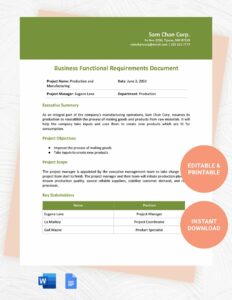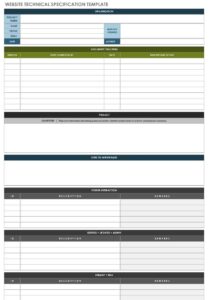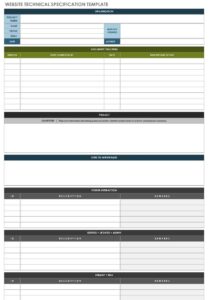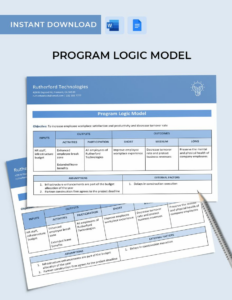When designing a new system or making significant changes to an existing one, it’s essential to clearly define the functional requirements. These requirements outline the specific tasks that the system must perform, as well as the inputs and outputs that it will handle. A well-written functional requirements document (FRD) is essential for ensuring that the system meets the needs of its users and stakeholders.
There are many different ways to create a FRD, but there are some key elements that should always be included. These include:
* A statement of the problem or need that the system is intended to address
* A list of the system’s functional requirements, organized by module or subsystem
* A description of the system’s inputs and outputs
* A set of acceptance criteria that will be used to verify that the system meets its requirements
* A glossary of terms that are used in the FRD
Creating a Functional Requirements Document
The process of creating a FRD can be divided into several steps:
* **Gather requirements.** The first step is to gather requirements from stakeholders. This can be done through interviews, workshops, or questionnaires. It’s important to involve a wide range of stakeholders, including users, developers, and managers.
* **Analyze requirements.** Once you have gathered requirements, you need to analyze them to identify commonalities and dependencies. This will help you to organize the requirements into a logical structure.
* **Write the FRD.** The next step is to write the FRD. The FRD should be clear, concise, and complete. It should also be easy to read and understand for all stakeholders.
* **Review and approve the FRD.** Once the FRD is written, it should be reviewed and approved by all stakeholders. This will ensure that everyone is on the same page about the system’s requirements.
Using a Functional Requirements Document Template
There are many different functional requirements document templates available online. These templates can help you to save time and ensure that your FRD is complete and well-organized.
When choosing a template, it’s important to consider the size and complexity of your project. There are templates available for small, medium, and large projects. There are also templates available for specific types of systems, such as software systems, hardware systems, and enterprise systems.
Once you have chosen a template, you can customize it to fit your specific needs. You can add or remove sections, and you can change the wording to make it more specific to your project.
Using a functional requirements document template can help you to create a clear, concise, and complete FRD. This will ensure that the system you develop meets the needs of its users and stakeholders.
Conclusion
A functional requirements document is an essential tool for any system development project. It provides a clear and concise statement of the system’s requirements, and it helps to ensure that the system meets the needs of its users and stakeholders.
By using a functional requirements document template, you can save time and ensure that your FRD is complete and well-organized. This will help you to develop a system that meets the needs of its users and stakeholders.



